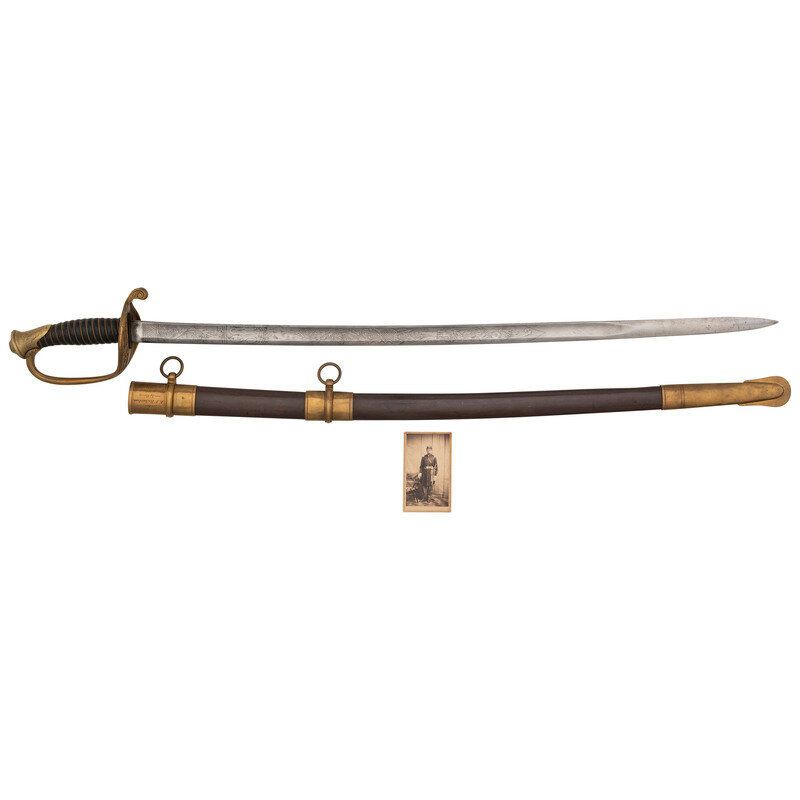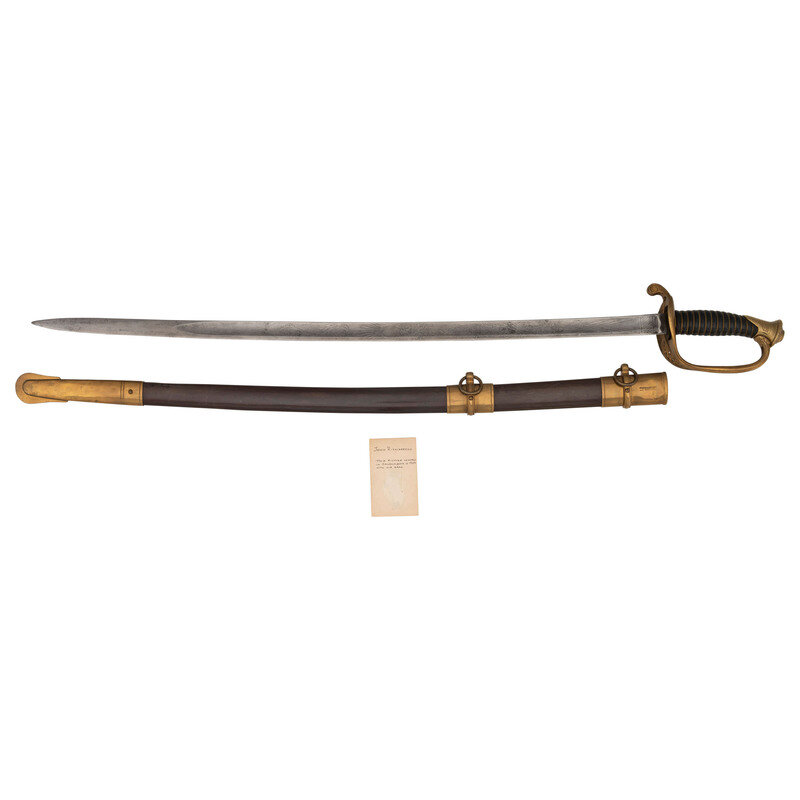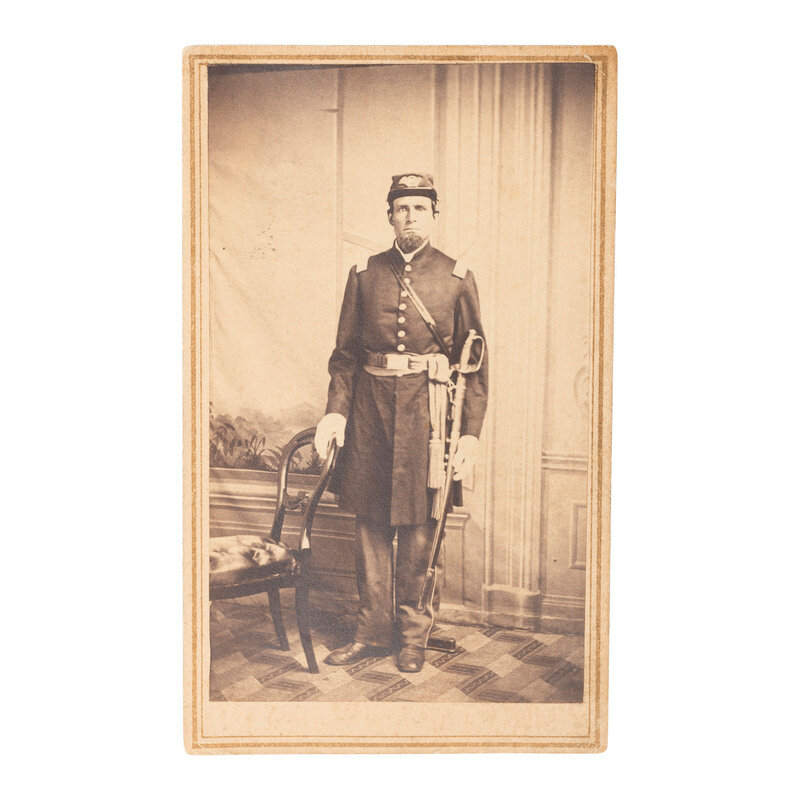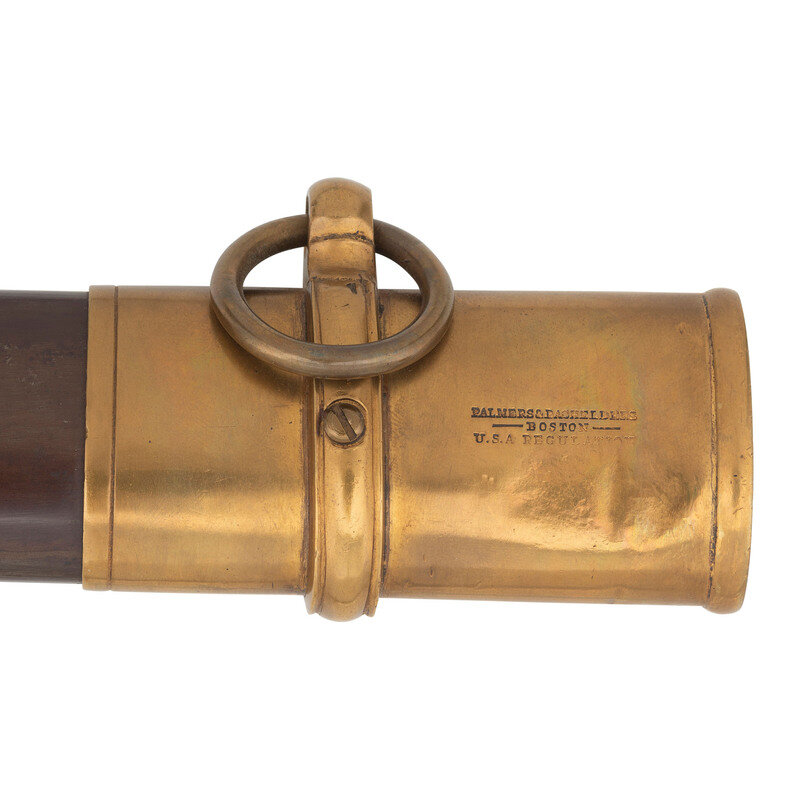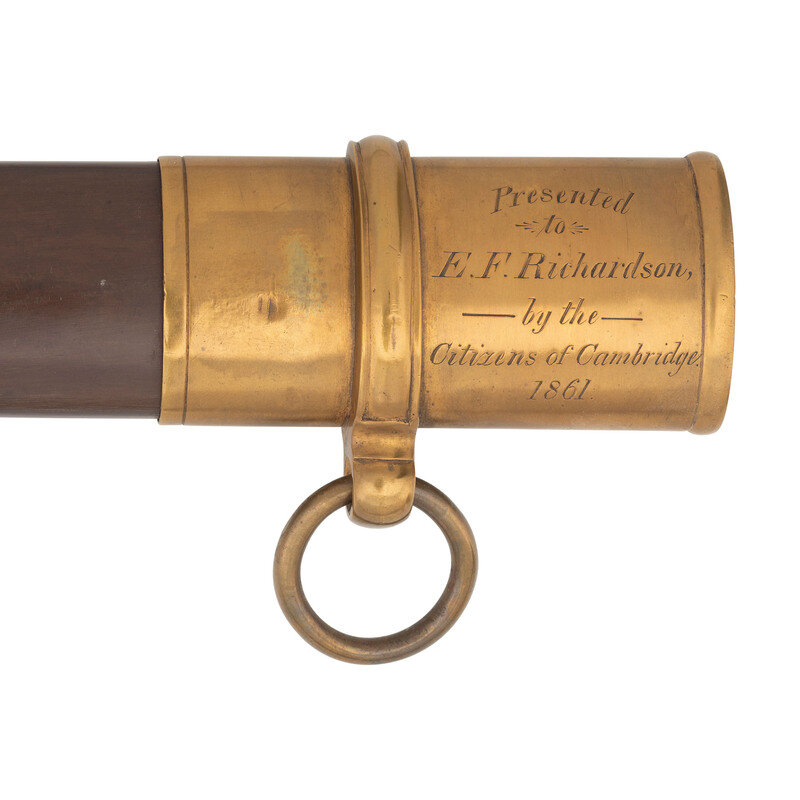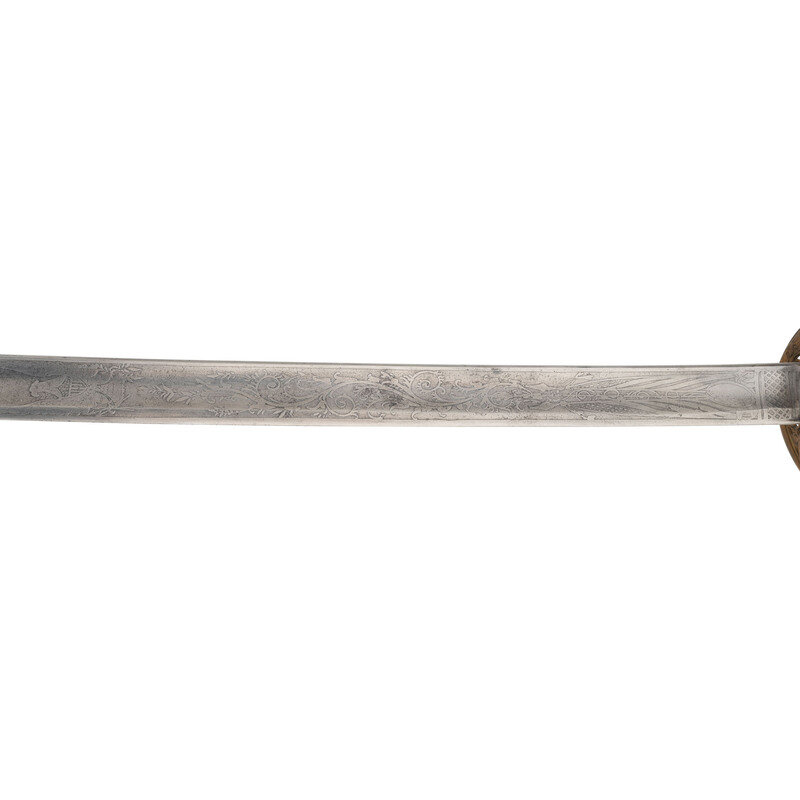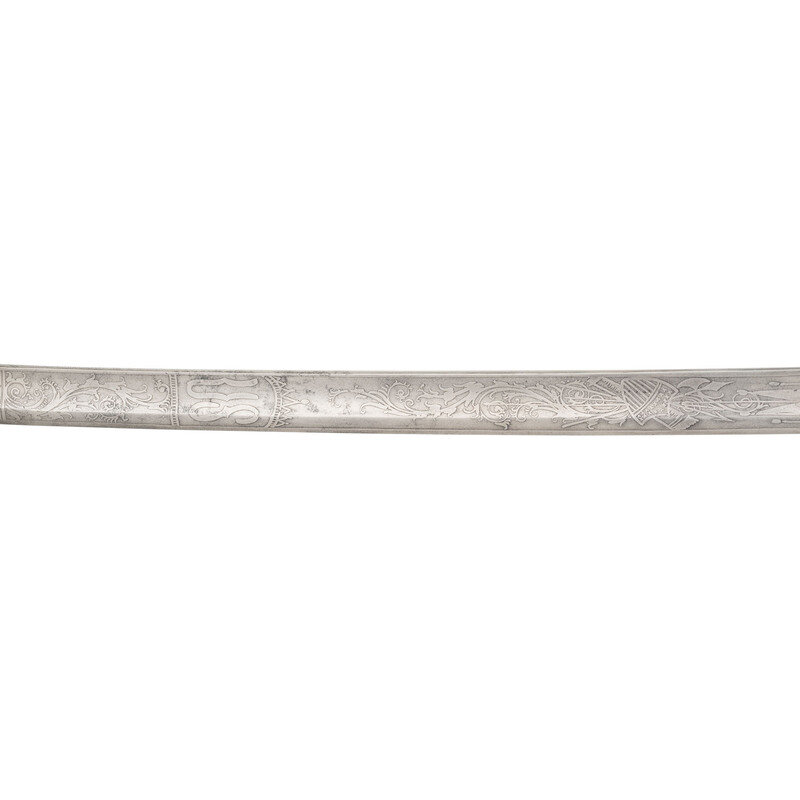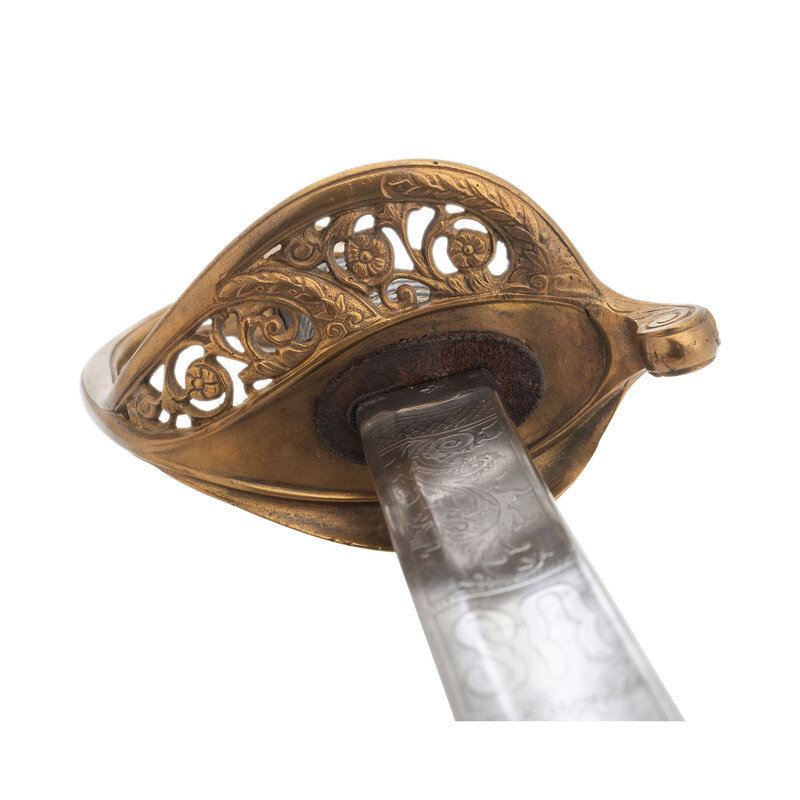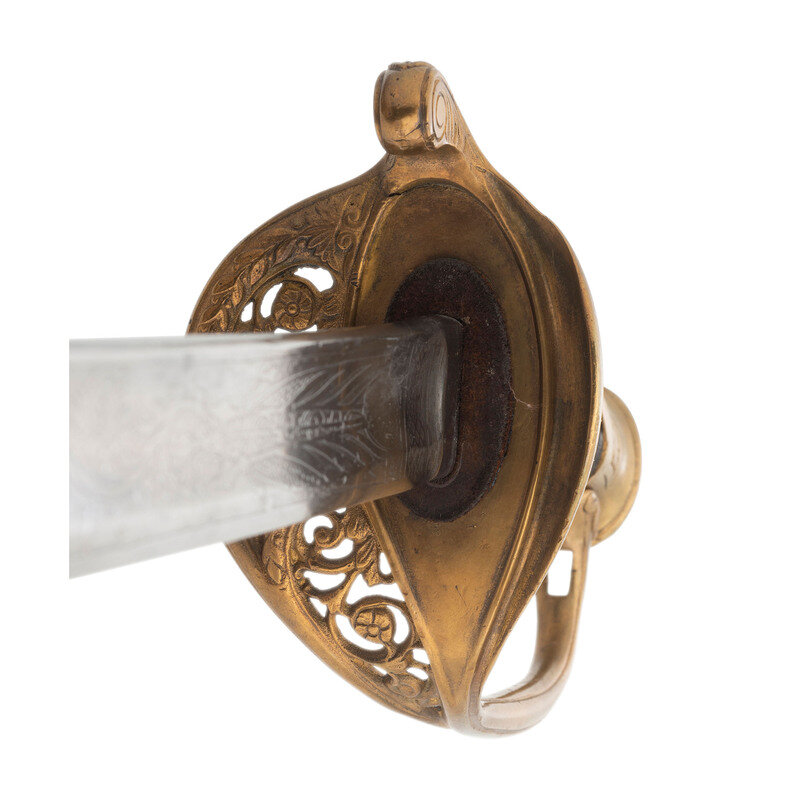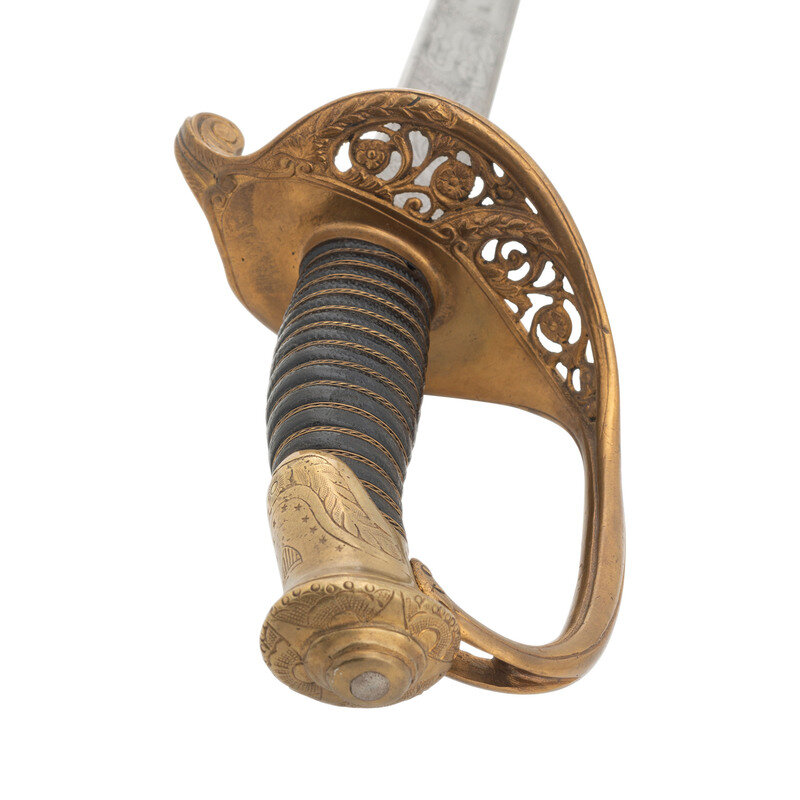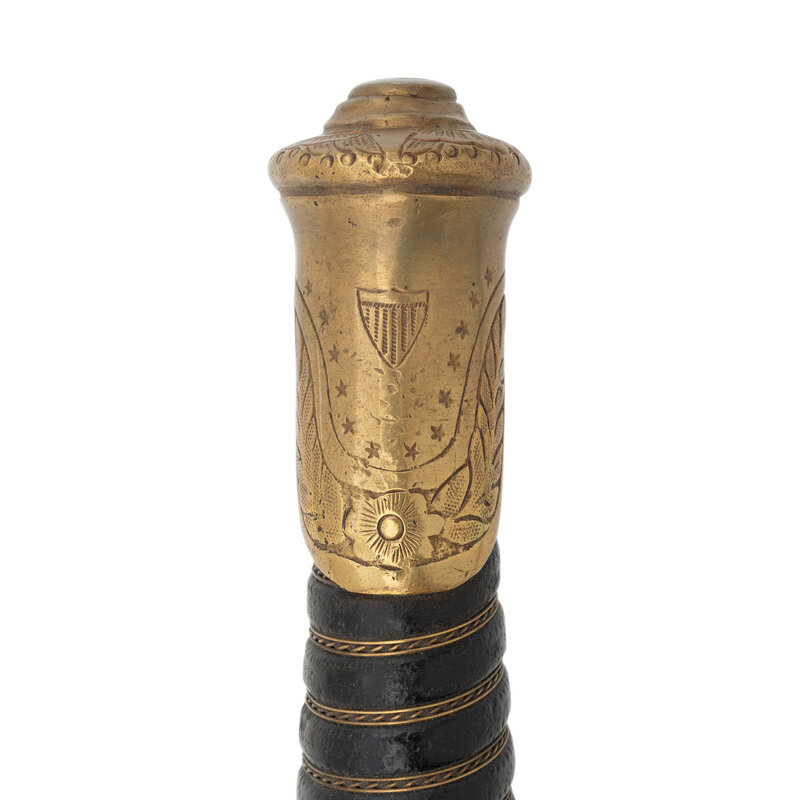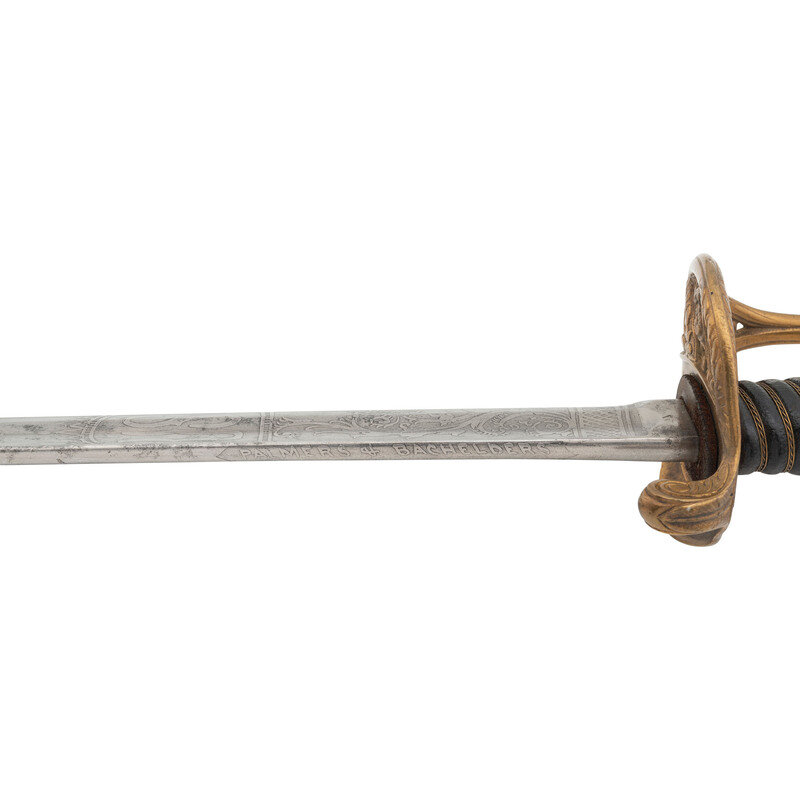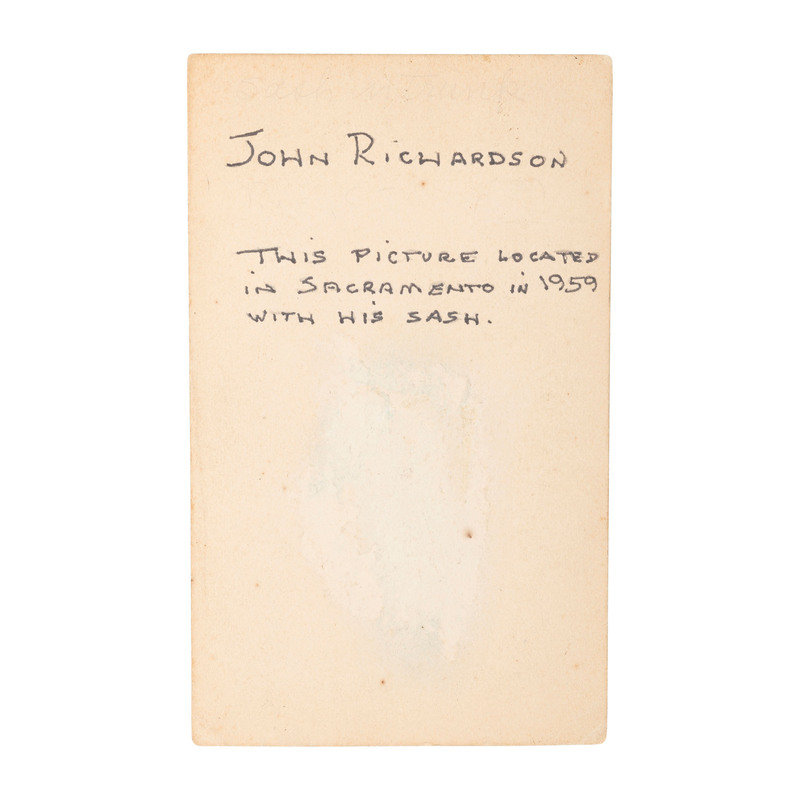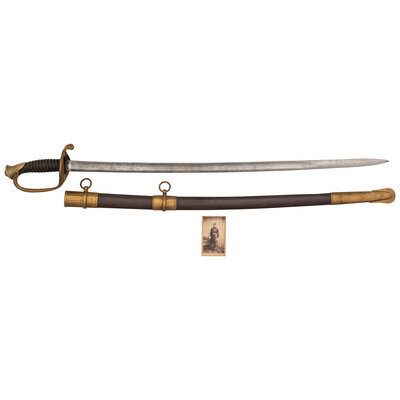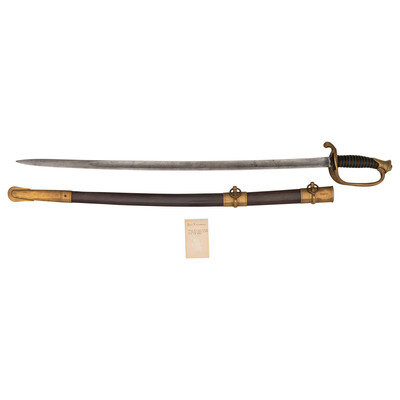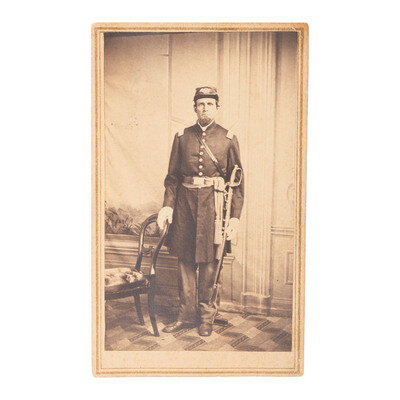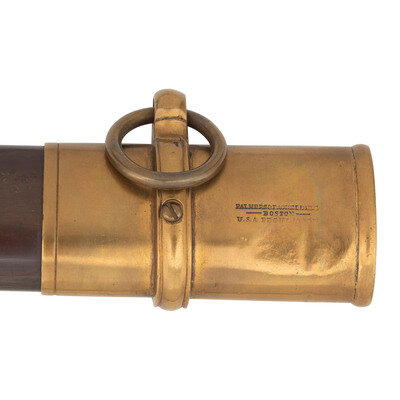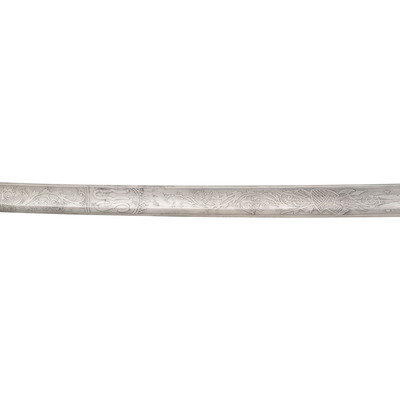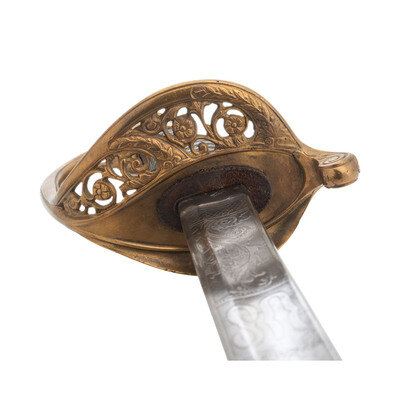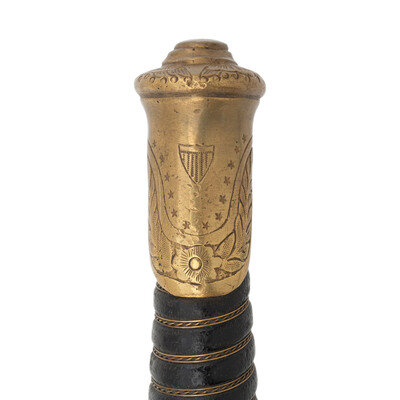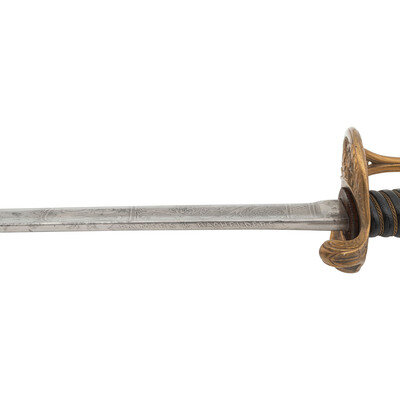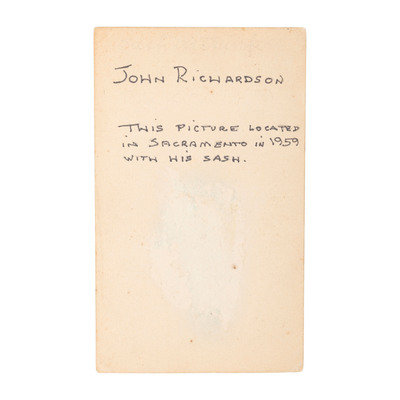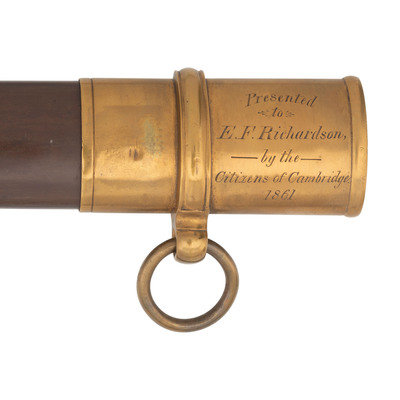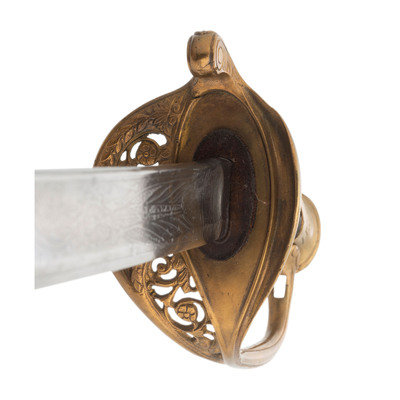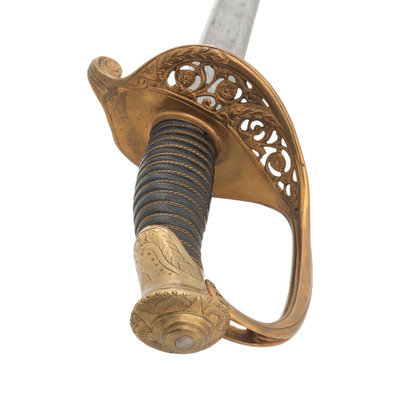31.5" single-edged, slightly curved spear point blade with a 23.75" stopped median fuller. Blade 1" wide at ricasso, overall length 37.5". 6" hilt of standard patterns with floral motif gilt brass guard and grooved wooden grip covered in pebble grain leather with 14 wraps of multi-strand brass wire. Spine of blade etched PALMERS & BACHELDERS. Blade with 19" acid etched panels showing flowing foliate designs, panoplies of arms and martial and patriotic themes. Obverse of blade with a large US and a {Shield of Columbia} and the reverse with a {Spread-Winged American Eagle}. The sword includes its browned steel scabbard with gilt brass mounts. The reverse of the upper mount is marked PALMERS & BACHELDERS/- BOSTON -/U.S.A. REGULATION. The obverse is engraved PRESENTED/to/EF RICHARDSON/- by the -/Citizens of Cambridge/1861. The sword is accompanied by a CDV of Richardson in a studio setting in full dress uniform, wearing what appears to be this sword. The sword was featured in a January 1986 Gun Report article, with detailed history about Richardson, a copy of which is included as well, along with a binder of information about Richardson, his service history, etc.
Edwin F Richardson was a 27 year old mason when he initially joined the Union cause in April of 1861 and was commissioned a 2nd lieutenant in Company C of the 3rd Massachusetts Infantry. The 3rd MA was a 90-day regiment and did their service in and around Fortress Monroe and was part of the expedition to Gosport Naval Yard to attempt to destroy the arms and materiel there to prevent its use by the Confederacy. Upon their mustering out in July of 1861, Richardson was commissioned as a 2nd lieutenant into Company G of the 22nd MA Infantry. It was at this time the citizens of Cambridge presented him with this sword, the account of which is reported in period newspapers. The 22nd MA was initially detailed to the defenses of Washington but in the spring of 1862 took part in the Peninsula Campaign, seeing action at Gaines' Mill. Between that battle and commencement of the Seven Days Campaign, on the evening of June 5 to the morning of June 6, 2nd lieutenant Richardson was found drunk while Officer of the Day and in charge of the camp guard. He was brought up and charges to be cashiered, but was allowed to resign his commission with the charges dropped. No doubt the dishonor haunted him and he searched for a means to redeem himself in the eyes of his family and the citizens who presented him with the sword. In December 1863 he enlisted in the 56th MA as a private and went back to war in search of redemption. On May 18, 1864 he was grievously wounded at Spotsylvania and died 8 days later in Alexandria, VA.
